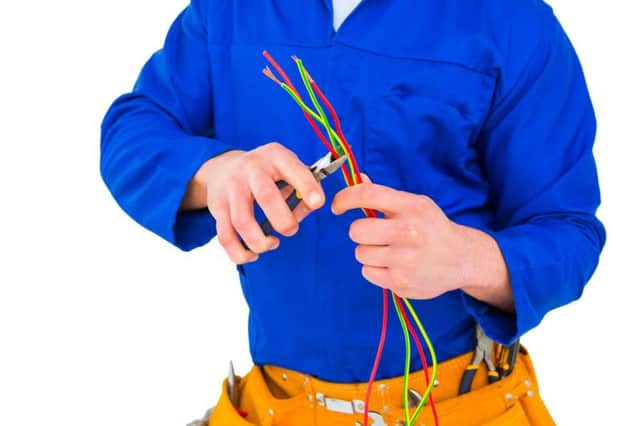Five ways to make your home safer


1. Having a property rewired is expensive and disruptive, so we often put up with the wiring we’ve inherited when we move and forget about getting it sorted. Unless the sockets, light switches and flexes are obviously old, it can be hard to tell the age of the wiring. A good place to start is the fuse box. If it has rewirable fuses, for example, it should probably be replaced because modern fuse boxes don’t use fuse wire. Other signs of old wiring include sockets with burn marks, sockets mounted on skirting boards, and surface-mounted cables.
2. The only way to be sure if the wiring’s safe is to get a qualified electrician to test it. If your home does need rewiring, it’s easiest to use an electrician registered with one of the Government’s competent-person schemes, such as NICEIC (www.niceic.com), as they can self-certify that their work complies with building regulations. If they don’t belong to such a scheme, you can get their work checked and signed off by a building control inspector (either from your local council or a private firm). The key thing is to get a completion certificate from a recognised body to prove that the electrical work is safe and legal, something often needed when you sell or rent out your home.
Advertisement
Hide AdAdvertisement
Hide Ad3. Gas appliances are another potential danger. By law, they must be installed by a Gas Safe Register engineer (www.gassaferegister.co.uk). They should also be serviced by one annually to ensure they’re safe and working efficiently. Carbon monoxide poisoning from gas appliances can, of course, be fatal and is hard to detect. That’s why it’s safest to have a carbon monoxide alarm in each room where there’s a gas appliance. But fitting one isn’t enough - you must press the test button on it regularly to make sure it’s working, and change the batteries when required, although some alarms have built-in batteries that can’t be replaced.
4. Smoke alarms should also be tested regularly, but there’s nothing more annoying than one that goes off every time you burn a piece of toast. Taking out the battery is a potentially dangerous habit to get in to, so go for an alarm with a silencer button. Some alarms are ‘toast proof’, meaning they’re less likely to be set off when you cook. If you have wired-in alarms (see below), your electrician should fit a heat detector, rather than a smoke alarm, in the kitchen.
5. All new homes must be fitted with interlinking wired-in smoke alarms and this can also apply when you do major building work, such as rewiring, or converting the loft. If you don’t want to replace your home’s existing doors with fire doors when doing a conversion, getting an electrician to install smoke alarms throughout should ensure compliance with building regs. If wired-in alarms aren’t required, fitting smoke alarms that wirelessly interlink is a great alternative. Interlinking means that if there’s a fire, all the alarms will go off at the same time, so even if you’re sleeping a long way from the fire, you’ll be alerted instantly.